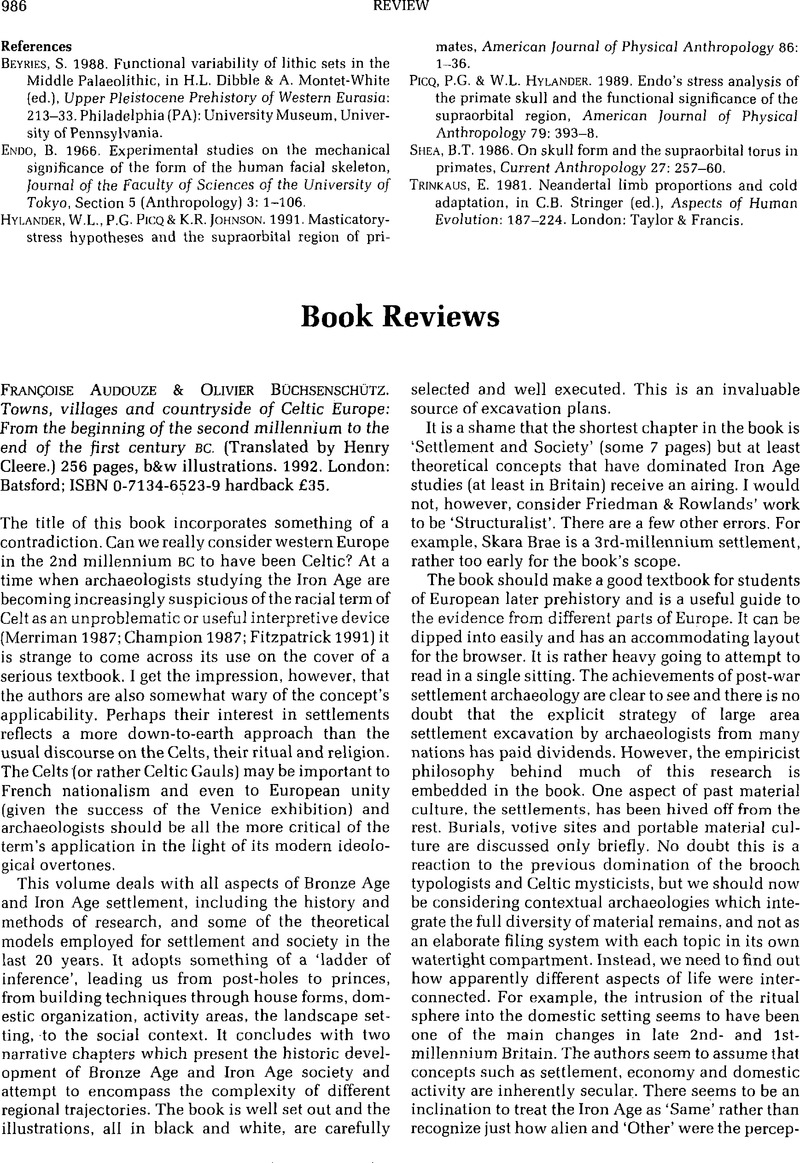No CrossRef data available.
Article contents
Françoise Audouze & Olivier Büchsenschütz. Towns, villages and countryside of Celtic Europe: From the beginning of the second millennium to the end of the first century BC. (Translated by Henry Cleere.) 256 pages, b&w illustrations. 1992. London: Batsford; ISBN 0-7134-6523-9 hardback £35.
Published online by Cambridge University Press: 02 January 2015
Abstract
An abstract is not available for this content so a preview has been provided. Please use the Get access link above for information on how to access this content.

- Type
- Book reviews
- Information
- Copyright
- Copyright © Antiquity Publications Ltd 1992
References
Champion, T.C.
1987. The European Iron Age: assessing the state of the art, Scottish Archaeological Review
4: 98–107.Google Scholar
Fizpatrick, A.P.
1991. ‘Celtic (Iron Age) Religion’ – traditional and timeless?
Scottish Archaeological Review
8: 123–9.Google Scholar
Merriman, N.
1987. Value and motivation in prehistory: the evidence for ‘Celtic’ spirit, in Hodder, I. (ed.), The archaeoJogy of contextual meanings: 111–16. Cambridge: Cambridge University Press.Google Scholar
Parker Pearson, M. Forthcoming. Food, fertility and front doors in the first millennium BC, in Champion, T. & Collis, J. (ed.), The British Iron Age: recent trends. Shef-field: J R. Collis Publications.Google Scholar


